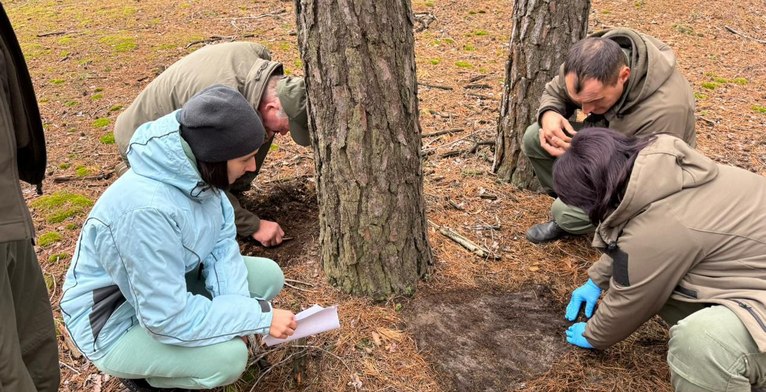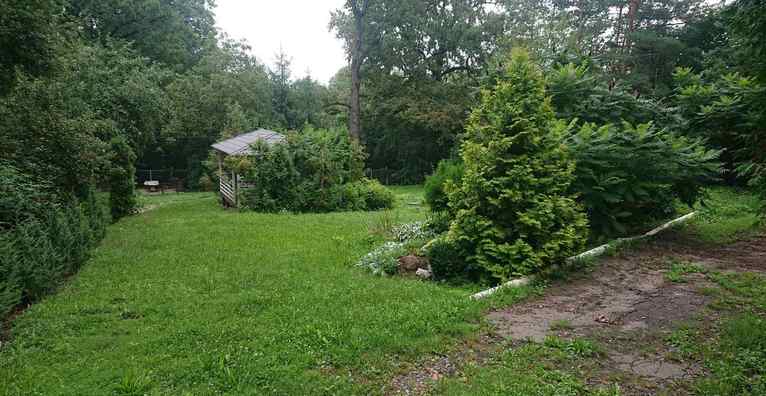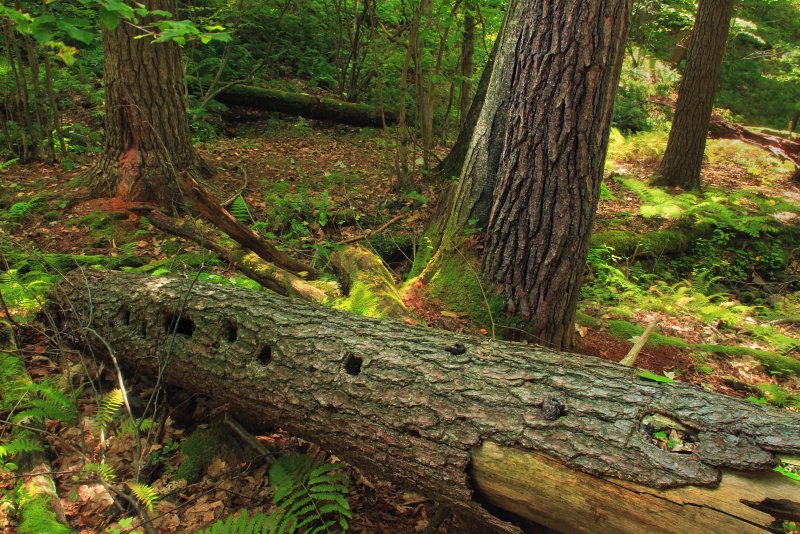Unauthorized harvesting, gathering of deadwood, littering, or collecting dry wood is considered a violation of forest conduct rules. According to the Forest Code of Ukraine, forest resource use can be carried out through general and special use. General use refers to the population's right to free collection of wild herbs, flowers, medicinal plants, nuts, berries, mushrooms, etc. for personal consumption without special permits.
Special use of forest resources grants exclusive rights for timber harvesting to permanent forest users, conducted under special permits called timber cutting tickets. However, another crucial aspect is preserving forest biodiversity, as deadwood serves as habitat for numerous living organisms.
Deadwood plays several vital roles in forest ecosystems:
- ✔ Deadwood is a valuable food source for many living creatures
- ✔ Fungi: Ukrainian mycologists have identified over 500 species of diverse fungi living on deadwood, including rare and protected varieties
- ✔ Insects and their larvae: Wood-boring insects are primary food for insectivorous forest birds and animals like bats. Some insect species themselves are rare and require protection, such as the stag beetle whose larvae develop in decaying wood
- ✔ Many large forest animals use deadwood as shelter and resting places. For example, wild boar young thrive in large forest areas with abundant undergrowth, while owls find refuge in existing tree hollows
- ✔ Fallen trunks provide sunbathing spots for grass snakes, turtles, and other cold-blooded creatures
- ✔ Deadwood retains water and minerals, supports mosses and lichens, and creates a stable microclimate that fosters growth of young trees
The ecological importance of deadwood cannot be overstated. It serves as the foundation for complex food chains and provides essential habitat for numerous species. In managed forests, maintaining an appropriate amount of deadwood (20-30 m³ per hectare) helps preserve biodiversity while still allowing for sustainable timber production.







